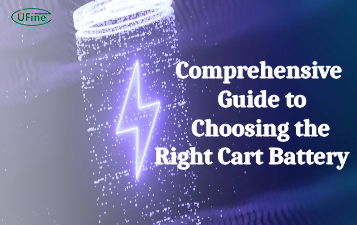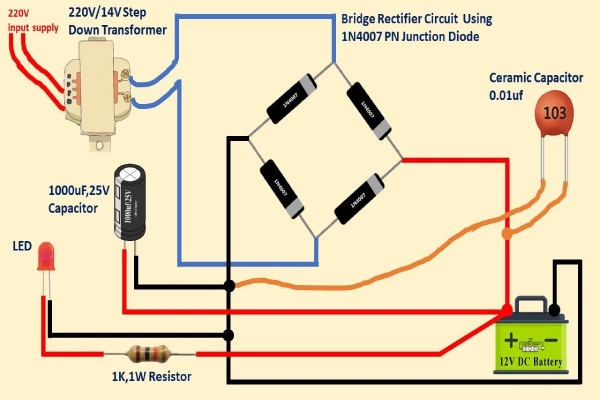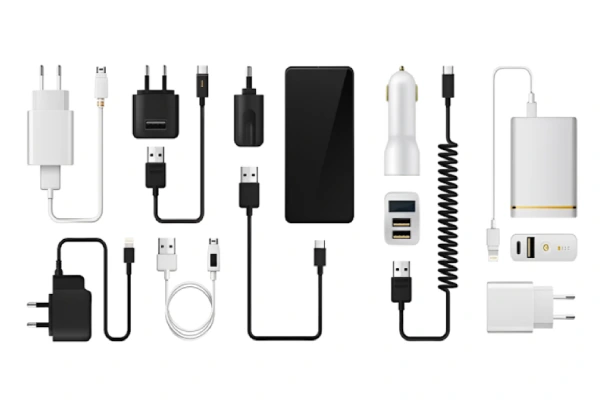When your cell phone or laptop runs out of battery. What do you do? You recharge them. While recharging, have you ever thought about how a battery charger works? Let’s talk about it.
A battery has a chemical energy stored in it. It converts this chemical energy into electrical energy. In this process, the electrolyte is depleted. Here comes the charger. It provides direct current to the battery. Hence, the charger restores the battery’s exhausted electrolyte.
Part 1. The complete process of how a battery charger works?
The charger does not recharge a battery in a single step. It is a complex process.
Here are the steps for charging the battery.
- Connect the charger to the socket: First, plug the charger into the socket. The socket /will supply electrical energy to the charger.
- Transformer: A transformer is present in the charger. This transformer converts the alternating voltage to the appropriate levels. Now, the charger can work properly at a suitable voltage level.
- Conversion of AC to DC: In most circumstances, the electrical energy provided to the socket is alternating voltage. A charger contains the rectifier. This alternating current is rectified to direct current.
- Voltage Regulation: This Direct Current passes through the voltage regulator. The voltage regulator regulates the voltage to the correct levels. In this way, it ensures safe charging.
- Connection to a Battery: After that, the charger supplies DC electricity to the battery. The battery stores this energy. Hence, the battery recharges and can be used again.
These are the simple steps that show how the battery charger works.
Part 2. What is a C-rate?
When discussing how a battery charger works, it is important to understand the C rate.
C rate is the rate at which a battery charges or discharges relative to its capacity. C- rates differ for different batteries. Smaller batteries usually have a C-rate of 1C.
The maximum C-rate for a batter can reach up to 10C. A higher C -rate means quicker charging. Similarly, a lower C rate means slower charging. Suppose a battery has a C- rate of 1C and a charging capacity of 2000 mAH. It can supply up to 2 Amperes of current in an hour.
Part 3. Different types and applications of battery chargers
After discussing how a battery charger works, let’s speak about the different types of battery chargers. Here is a list of some of the most used battery chargers.
1. Simple Charger
Simple chargers are the most common type of chargers. They supply fixed voltage to the battery. Simple chargers are suitable for daily use. They are cheap. But they have some disadvantages as well. They take slightly longer to charge a battery
2. Fast Chargers
Fast chargers are the chargers that can rapidly charge a device. They have advanced charging algorithms. Moreover, they are suitable for use as portable devices. Fast chargers particularly charge mobile phones. Because mobile phones require quick charging, fast chargers may contain a cooling fan. The cooling fan keeps the temperature at suitable levels.
3. Inductive Chargers
Induction-powered chargers use electromagnetic induction phenomena to charge the device. Inductive Chargers do not require cables to connect with the battery. They are also known as wireless chargers. Inductive chargers are commonly used in electric toothbrushes and smartwatches.
4. Trickle Chargers
A trickle charger provides a consistent current to the charger for a prolonged period. This trickle charger increases the lifespan of the battery. Trickle chargers are mostly used in lawnmowers and boats.
5. Smart Chargers
Smart chargers use microprocessors to control the charging process. They are also known as intelligent chargers. Smart chargers adjust the charging rate according to the battery’s condition. It prevents the overcharging and undercharging of the battery. So smart chargers provide safety to the device by preventing overcharging.
6. Solar Chargers
Solar chargers use sunlight to charge batteries. They work well for outdoor pursuits. Solar panels are present in solar chargers. Solar panels transform sunlight into electrical energy. This electricity then powers batteries. Solar chargers are environmentally beneficial. They often recharge vehicles, iPads, camping gear, and other items.
7. USB Chargers
USB chargers use USB ports to power electronic devices. They are used in a wide scope of applications, such as digital audio players. Most USB chargers contain safety features. So, they prevent overcharging, overheating, and short circuits.
8. Universal Chargers
Universal chargers can charge multiple types of batteries. They have adjustable battery slots. Universal chargers can work with a variety of battery types. They are useful for enterprises that rely on multiple battery-powered devices.
Part 4. Different battery chargers’ typical prices
Here are some typical prices of different types of battery chargers.
Note: These are approximate prices. So, they can vary from brand to brand based on different features.
| Type of Battery Charger | Example Prices (USD) |
|---|---|
| Smartphones | $10 (Generic brand, basic features), $30 (Established brand, fast charging) |
| Laptops | $20 (Standard charger), $50 (High-quality, fast-charging model) |
| Electric Vehicles | $200 (Basic model), $500 (High-power, fast-charging model) |
| Marine/RV | $50 (Basic charger for smaller batteries), $150 (High-capacity, multi-bank charger) |
| Industrial | $100 (Entry-level charger), $300 (Heavy-duty, industrial-grade charger) |
Part 5. Factors to Consider Before Buying a Charger
So, let’s discuss the factors and a few guidelines to understand before purchasing a battery;
1.Charger Compatibility
Select your charger according to your battery type. e.g., use a Ni-Cad charger for a Ni-cadmium battery. You cannot charge a lead-acid battery with a lithium-ion battery.
2. Charging Capacity
Choose a charger with a 10-20% charging capacity relative to your battery’s charging capacity. For example, if your battery has a 60-ampere hour rating, charge it with at least a 6-ampere charger. Do not use a charger greater than 12 amps for a 60-amp-hour battery rating. This will prevent overcharging.
3. Safety Features
Another important factor to consider before buying a battery charger is safety. A charger must contain a temperature sensor. It will prevent overheating and overcharging. So it can avoid the risk of short circuits. It must have other features, such as capacity cut-off. Capacity cut-off will terminate charging once the battery’s charging capacity is reached.
4. Voltage Compatibility
Your charger must be compatible with your battery’s voltage rating. You can use a charger with a slightly higher voltage rating than the battery. For example, lithium-ion batteries typically have a voltage rating of 12 volts. You can charge them with a charger with a 12-14 voltage rating.
5. Efficiency of the Charger
You must choose a charger that is efficient to use. An efficient charger charges quickly generates less heat, produces fewer sounds, and is smaller. Inefficient battery chargers lose half of their power to heat and poor wiring.
These are some key factors you should consider before buying a battery charger.
Part 6. Conclusion
In conclusion, how does the battery charger work? Hopefully, you will get a deep understanding of its workings. It works by providing electrical energy to the battery. The battery uses this energy to restore its used chemicals. Moreover, battery chargers can be of different types. It may include fast, slow, solar, and smart chargers. So, charging capacity and compatibility are different factors to consider before buying a battery. Besides this, you must consider its efficiency and voltage compatibility.
Related Tags:
More Articles

Comprehensive Guide to Choosing the Right Cart Battery
Choosing the right cart battery ensures optimal performance and longevity. This guide covers cart battery types and helps you make an informed choice.
The Ultimate Guide to 18650 Button Top Battery
18650 button top batteries are popular for their high energy density and reliability. This guide covers their key features, usage, and maintenance tips.
The Power of Slim: Unveiling the Potential of Flat Lithium Ion Battery
Flat lithium-ion batteries power devices from phones to vehicles. This article explores their design, benefits, types, applications, charging, and safety.
The Comprehensive Guide to Battery Balancing and Battery Balancer
Battery balancing and balancers optimize performance, longevity, and safety. This guide covers techniques and tips for choosing the right balancer.
10 Key Facts About Drone Battery for 2024
Uncover crucial insights with "10 Key Facts About Drone Battery for 2024." Learn the latest trends and essential details on drone batteries.





